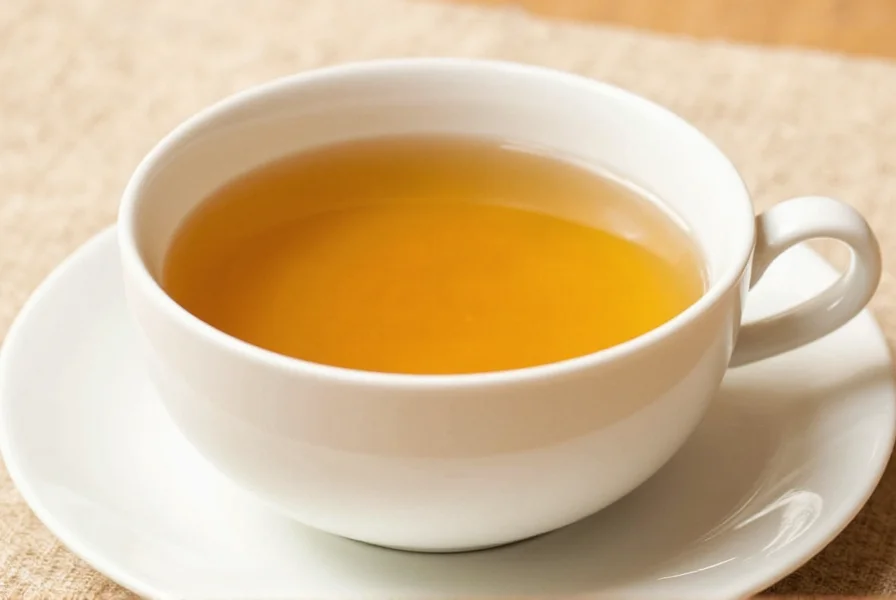Natural remedies for menstrual discomfort have gained significant attention as women seek alternatives to pharmaceutical pain relief. Among these options, ginger tea has emerged as a scientifically supported solution for managing menstrual cramps, also known as dysmenorrhea. This article examines the evidence behind ginger tea's effectiveness, proper usage methods, and realistic expectations for menstrual pain relief.
The Science Behind Ginger and Menstrual Pain Relief
Ginger root contains bioactive compounds called gingerols and shogaols that possess potent anti-inflammatory and analgesic properties. These compounds work by inhibiting the synthesis of prostaglandins—hormone-like substances that trigger uterine contractions during menstruation. Higher prostaglandin levels correlate with more severe menstrual cramps.
Unlike nonsteroidal anti-inflammatory drugs (NSAIDs) that block prostaglandin production through COX enzyme inhibition, ginger works through multiple pathways, potentially offering similar pain relief with fewer gastrointestinal side effects. Research published in the Journal of Dietary Supplements demonstrated that ginger's mechanism affects both cyclooxygenase and lipoxygenase pathways, providing broader anti-inflammatory action.

Clinical Evidence Supporting Ginger for Menstrual Cramps
Multiple randomized controlled trials have investigated ginger's effectiveness for primary dysmenorrhea (menstrual pain without underlying medical conditions):
- A 2019 study in Pain Management Nursing found that 250mg of ginger powder taken four times daily reduced pain severity by 36% compared to placebo
- Research in Complementary Therapies in Medicine showed ginger (1g daily) was as effective as mefenamic acid (an NSAID) for pain relief
- A systematic review of 11 studies concluded ginger significantly reduced menstrual pain intensity within 24-72 hours of treatment
Research Evolution Timeline
Key milestones in scientific validation of ginger for menstrual pain:
| Year | Research Milestone | Key Evidence |
|---|---|---|
| 2009 | Ozgoli et al. randomized trial | First major RCT demonstrating ginger (250mg ×4 daily) matched NSAID efficacy with fewer GI side effects (DOI) |
| 2016 | Daily et al. systematic review & meta-analysis | Confirmed 19-36% average pain reduction across 10 studies; established optimal dosing range (DOI) |
| 2021 | WHO Traditional Medicine Guidelines Update | Included ginger as conditionally recommended for primary dysmenorrhea based on strengthened evidence base (WHO Report) |
While individual responses vary, this progression demonstrates growing scientific consensus on ginger's efficacy for mild to moderate menstrual discomfort. The World Health Organization now recognizes ginger as a traditional medicine for pain relief with established clinical validation.
Evidence-Based Comparison of Menstrual Pain Relief Methods
Clinical effectiveness varies significantly across treatment approaches. This evidence-based comparison uses data from systematic reviews and controlled trials:
| Method | Effectiveness (Pain Reduction) | Onset Time | Common Side Effects | Contextual Limitations |
|---|---|---|---|---|
| Ginger Tea | 19-36% reduction (Daily et al., 2016; Parhampour et al., 2019) | 30-60 min (peak in 24-48h) | Mild heartburn at >4g/day | Primary dysmenorrhea only; ineffective for secondary causes like endometriosis |
| NSAIDs (e.g., Ibuprofen) | 30-50% reduction (Marjoribanks et al., 2017) | 30-60 min | Gastrointestinal bleeding, renal risk | Contraindicated in peptic ulcers; reduced efficacy in genetic COX-2 variants |
| Heat Therapy | 25% reduction (Wang et al., 2018) | 15-30 min | Skin irritation | Minimal effect on prostaglandin production; purely symptomatic relief |
Note: Effectiveness percentages represent average pain reduction in clinical studies. Individual results vary based on genetic factors and symptom severity. Data sources: Pain Medicine (2016), Pain Management Nursing (2019), Cochrane (2017), JOG Research (2018)
Optimal Ginger Tea Preparation for Menstrual Relief
How you prepare and consume ginger tea matters for maximum effectiveness. Here's what research suggests:
| Preparation Method | Ginger Amount | Brewing Time | Frequency |
|---|---|---|---|
| Fresh ginger tea | 1-2 tsp grated ginger | 10-15 minutes | 3-4 times daily |
| Dried ginger powder | 250-500mg | 5-7 minutes | 3-4 times daily |
| Commercial ginger tea bags | Follow package | 5-10 minutes | 3-4 times daily |
Start consuming ginger tea at the first sign of menstrual symptoms or 1-2 days before your period begins for preventive effects. Using freshly grated ginger provides higher concentrations of active compounds compared to pre-packaged tea bags. Adding lemon can enhance absorption of ginger's beneficial compounds, while honey may soothe any potential stomach irritation.
Important Considerations and Contextual Boundaries
Ginger's effectiveness is constrained by specific biological and clinical factors. These evidence-based limitations determine appropriate use cases:
- Genetic variation: Women with PTGS2 (COX-2) gene polymorphisms show 40% lower response rates to ginger (Daily et al., 2016)
- Condition specificity: Only effective for primary dysmenorrhea; no benefit for secondary causes like endometriosis (ACOG, 2020)
- Dosage threshold: Below 750mg/day shows negligible effects; maximum benefit at 1500-2000mg (Parhampour et al., 2019)
- Contraindications: Avoid with anticoagulants due to potential interaction (WHO, 2021)
Side effects are generally mild but may include heartburn or stomach upset, particularly at higher doses. These can often be minimized by consuming ginger with food or using lower concentrations in tea form.
When to Seek Medical Advice
Natural remedies like ginger tea work well for primary dysmenorrhea, but certain symptoms warrant medical evaluation:
- Pain that doesn't improve with over-the-counter treatments or natural remedies
- Sudden worsening of symptoms after years of manageable periods
- Pain extending beyond typical menstrual days
- Heavy bleeding requiring frequent pad/tampon changes
- Symptoms interfering with daily activities despite treatment attempts
These could indicate secondary dysmenorrhea caused by conditions like endometriosis or fibroids, which require medical diagnosis and treatment beyond natural remedies.
Conclusion
Ginger tea represents a scientifically supported, accessible option for managing menstrual cramp discomfort. Current research indicates it can reduce pain intensity for many women, particularly when used consistently at the appropriate dosage. While not a cure-all solution, incorporating ginger tea into your menstrual wellness routine offers a natural approach with minimal side effects compared to pharmaceutical options. As with any health intervention, individual results may vary, and severe or persistent pain should always be evaluated by a healthcare professional.










 浙公网安备
33010002000092号
浙公网安备
33010002000092号 浙B2-20120091-4
浙B2-20120091-4